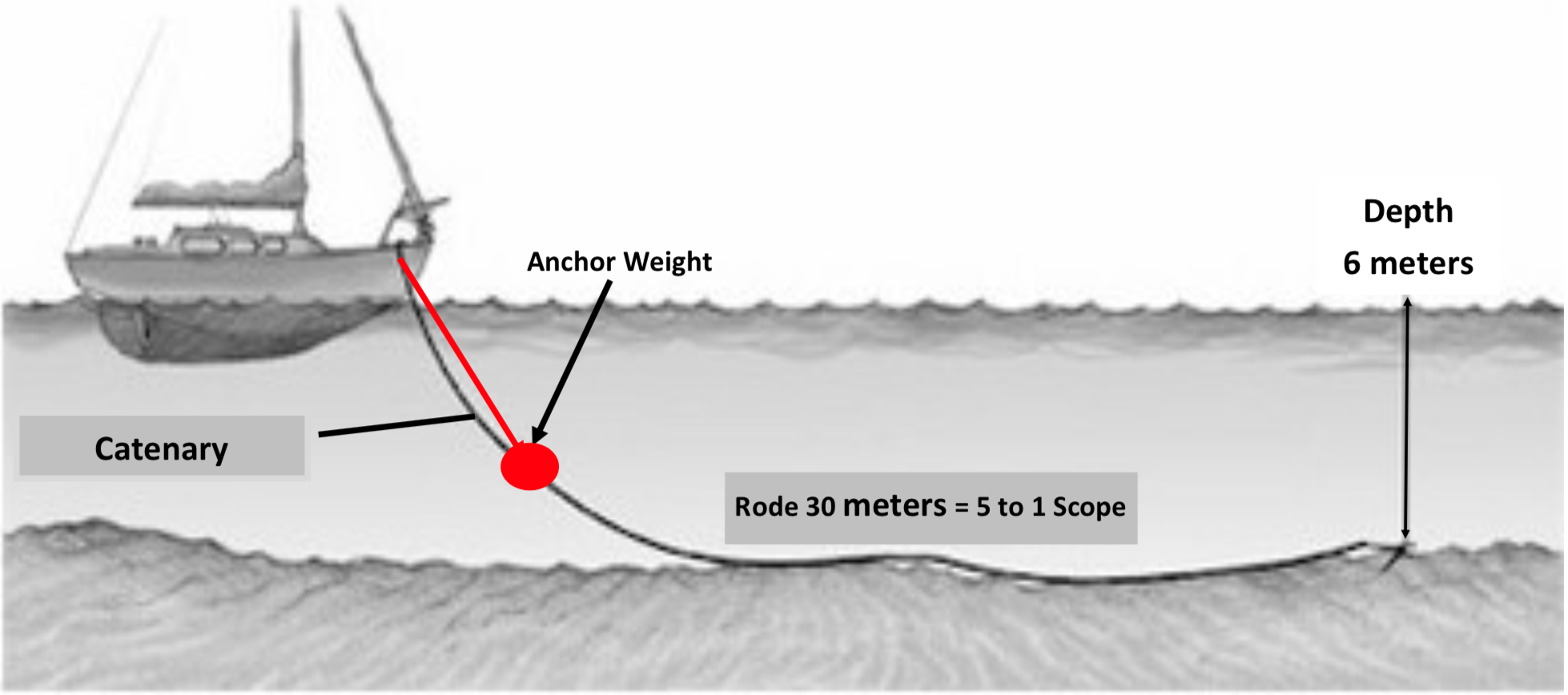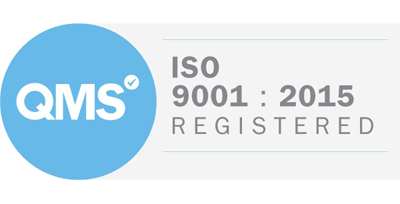

No products in the cart.


The answer is a very big NO! – There are probably well over one hundred different variations, with new types or designs of anchor appearing almost every year, it is noticeable that these are invariably intended for use within the leisure marine market, commercial users prefer to use anchor designs that have been tried and tested over many years.
The first anchors were probably used shortly after boats (logs) were originally launched. The earliest anchors were probably rocks attached by woven barks or vines, rock anchors have been found dating from before the Bronze Age. Pre-European Maori (canoes) used hollowed stones, tied with flax ropes, as anchors. Many modern moorings still rely on a large rock as the primary element of their design. However, using pure weight as an anchor to resist the forces of wind and tide only works as a permanent mooring, something differ- ent was needed to provide a portable anchor. Early mariners used baskets of stones or sacks filled with sand, which although portable, still used weight as the holding force.
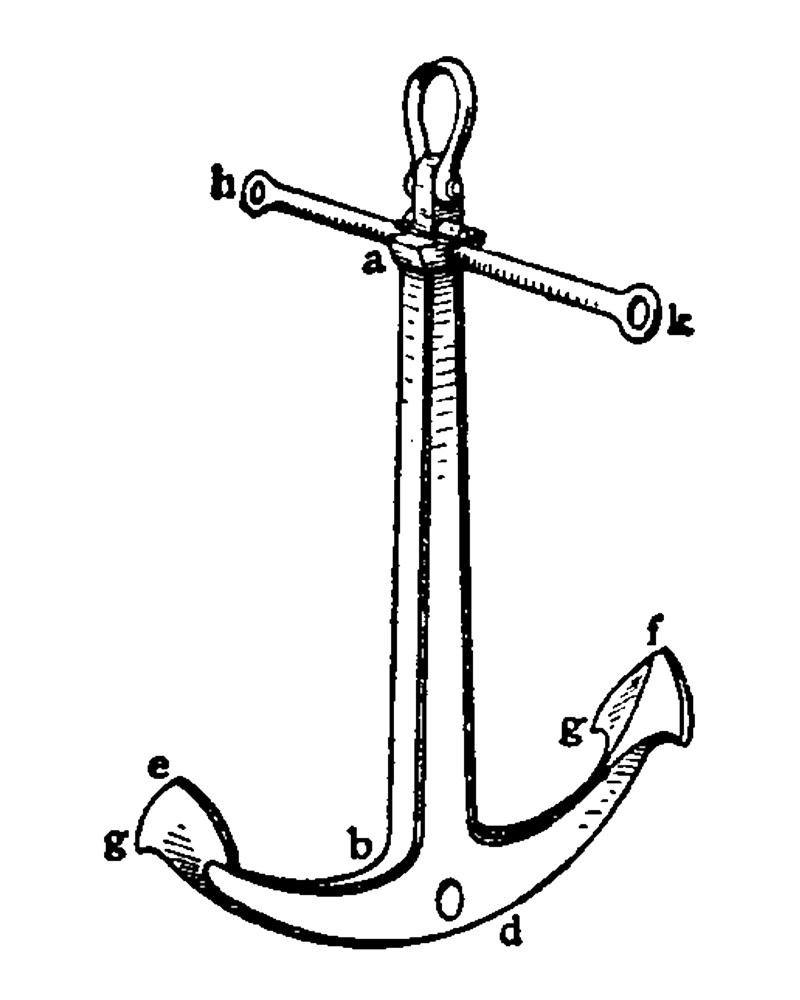
Iron ‘Admiralty Anchors’ which initially incorporated wood within the stock were eventually introduced for use on Royal Navy ships. Various improvements were made over the years until it resembled what we would now call a ‘Fishermans Anchor’.
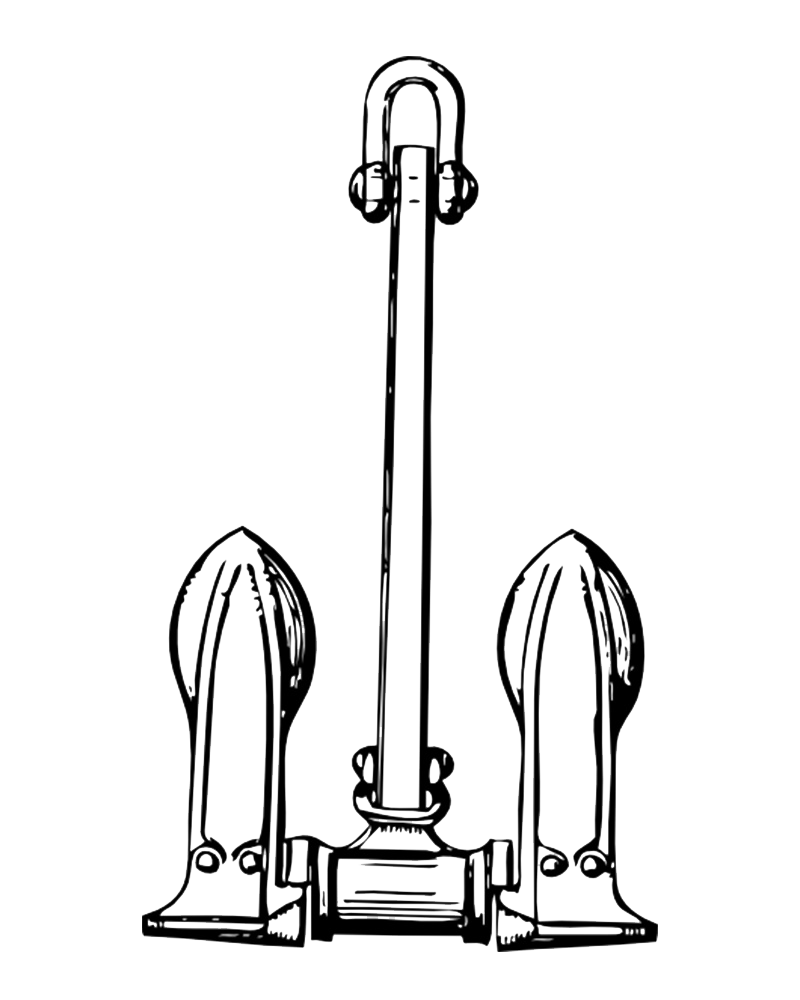
The first Stockless Anchor, originally (Patent Anchor) was patented in England in 1821, it came into wide use principally because of its ease of handling and stowing. The crown, arms, and flukes of a stockless anchor are cast in one piece and can pivot slightly from side to side on the shank. The flukes are long and heavy, and have projecting shoulders at their base that catch on the seabed. As more drag is exerted the shoulders force the flukes downward into the bottom. Stockless anchors have replaced the older stock anchor on most of the large ships of the world. There are now many types of stockless anchors.
Choosing the right type of anchor for a boat is arguably one of the least understood parts of seamanship. If buying a new vessel the manufacturer will generally fit the anchor type of the new owners choice but at additional cost, the manufacturer will advise the correct size of anchor. The original anchor may or may not be the best type or weight of anchor for the use intended by the next owner.
An experienced sailor knows that safe boat anchoring requires the right equipment, local seabed knowledge and careful choice of the correct place to drop anchor, all of which can lead to confusion when trying to make a decision on which anchor is best to use.
Another point to consider is where and when you are going use the boat, the owner who is only going to moor to have lunch may not need the same type of anchor as the sailor who intends to cruise the oceans of the world.
If you choose the wrong anchor, there is a good chance that your boat could drift into shipping channels, collide with other boats, drift ashore while you are asleep or at the very least give you some anxious moments. Some anchors can be expensive, paying a lot of money doesn’t mean that you have the correct anchor, instead of taking the risk it’s a far better idea to invest some time to find out which anchor is the most suitable to use relative to your particular requirements. If in doubt, ask those who are experienced in the area. Always remember that whatever type of anchor you use, bigger is always best. The most important factor should be the seabed, an anchor that looks nice and stows well but doesn’t hold the seabed is useless for anything other than an ornament.
There are several different types of anchor available to choose from, most experienced cruising yachtsmen will advise that you need two types on board to give an alternative anchor option should one not hold in a particular seabed, to reduce swing in a crowded harbour or in adverse weather conditions to hold the boat in position. Generally, as wind speed doubles the force on the boat increases by four, and two anchors may be required to keep the boat on station.
We stock more types and sizes than any other company in the UK. On a recent visit the C.E.O. of one of the larger UK leisure equipment manufacturers said ‘I’ve never seen so many anchors in the same place’!
Our stock ranges from purpose designed Permanent Mooring Anchors through to Folding Anchors for dinghies and inflatables. Some of these are described as ‘type’ versions which generally means that they are faithful copies of the original, however, we also try to stock the original version where possible.
Despite distributors being reluctant to disclose the origin of their anchors we can say that with only one known exception the are probably all manufactured in the far east.
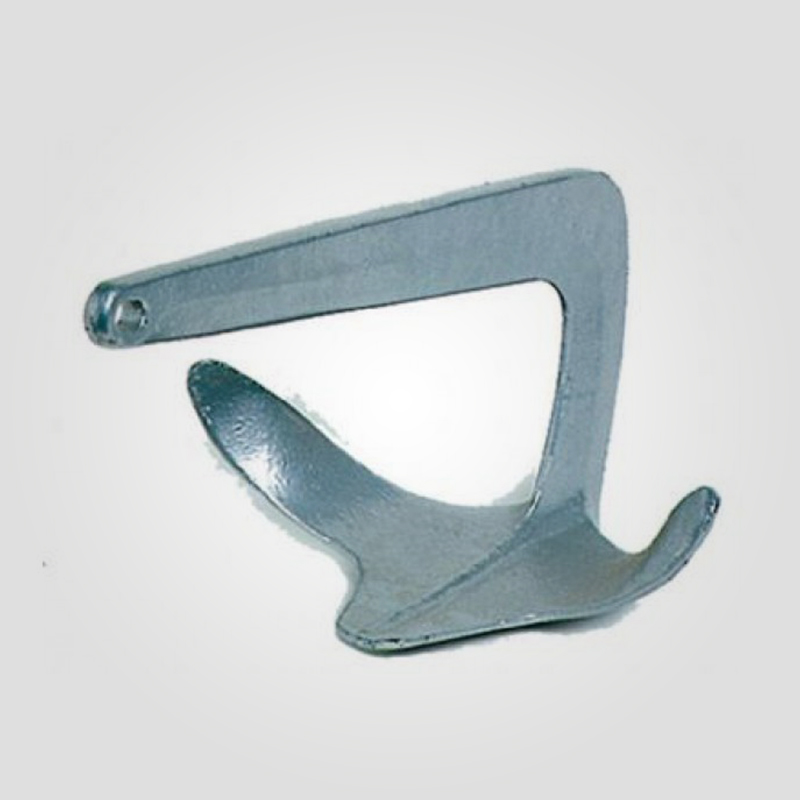
The original Bruce Anchor has not been produced for the small boat market since 2007, at this time the patent expired and opened the market to many copies. The Bruce Anchor Group now specialises in the manufacturer of large scale commercial mooring anchors, for oil and gas rigs. After Bruce left the small anchor market, a number of other manufacturers have come forward to fill the void with anchors of the same style and characteristics.
Originally designed in the early 1970s by Peter Bruce, the design was based on his other large-scale commercial anchors for fixed installations such as oil rigs and drilling platforms. The original Bruce Anchor and its copies have a large following among boaters. Because of to its simple construction, the Bruce anchor is relatively inexpensive when compared to other types of anchors. Having the shape of a large open claw, the design intention is to allow the anchor to fall in any direction when it touches the bottom and still be able to set properly. They are available in Hot Dip Galvanised Steel and Grade 316 Stainless Steel.
EYE / BGD stock Bruce type Anchors from 5 to 50 kgs
An American named Richard Danforth invented the Danforth Anchor in the 1940s for use aboard landing craft. It uses a stock at the crown to which two large flat triangular flukes are attached. The stock is hinged so the flukes can orient at about 30 degrees toward the bottom. Tripping palms at the crown act to tip the flukes into the seabed. The Danforth anchor is designed to bury its large flukes into the bottom giving good holding power in relation to the anchor size. Its lightweight and compact flat design make it easy to retrieve and relatively simple to store which is why it is particularly popular with canal cruisers.
EYE/BGD stock Danforth Anchors from 1.5 to 40 kgs
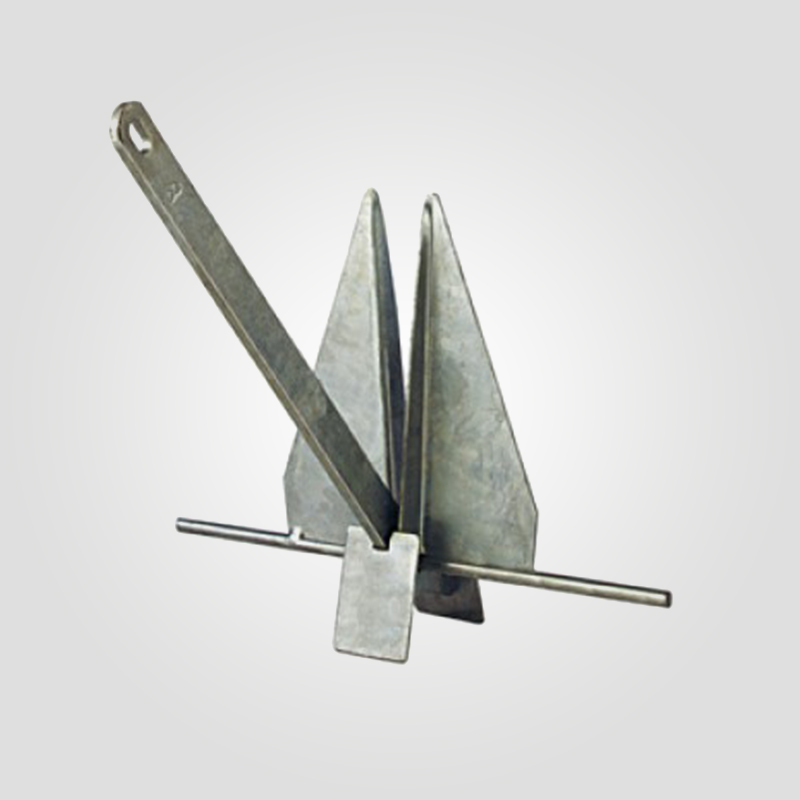
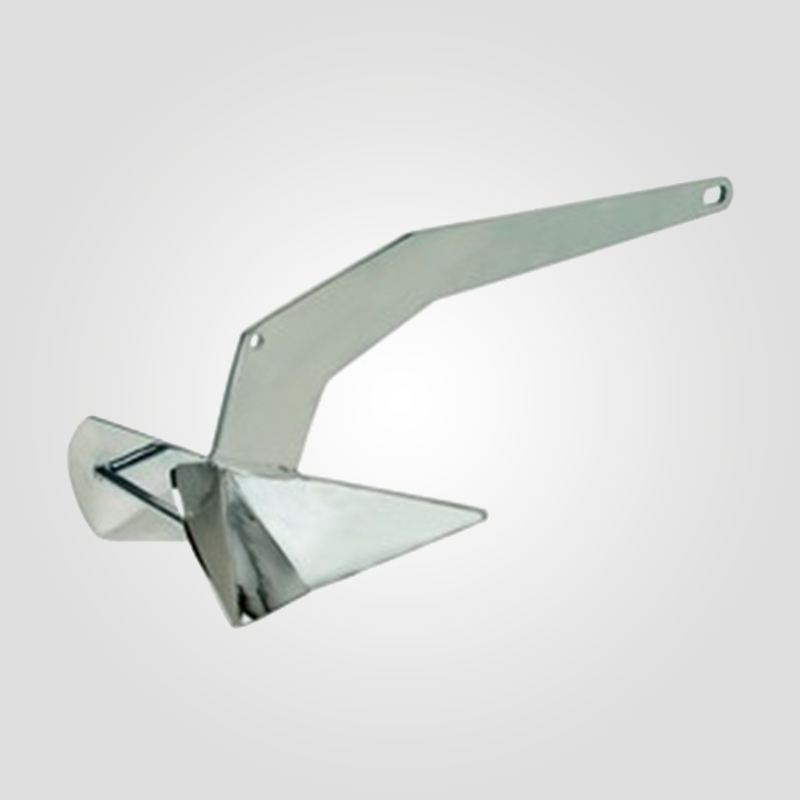
The Delta Anchor was developed in the 1980s for commercialization by the Scottish marine manufacturer Simpson-Lawrence. Its design originates from the plough anchor but with a rigid, arched shank. It is designated as self launching because it can be dropped from a bow roller simply by releasing the chain and without manual assistance. The design has stood the test of time, the Delta Anchor is the first choice of many boat builders and leisure sailors.
Available in Hot Dip Galvanised or Grade 316 Stainless Steel
EYE/BGD stock Delta type Anchors from 6 to 16 kgs
A copy of the SHHP (Super High Holding Power) Rocna Anchor.
The Rocna anchor is designated as ‘Super High Holding Power’ by the RINA Classification Society which coincidently is the same Classification Society that certifies the RINA chain supplied by EYE/BGD.
This anchor is described as a true multipurpose anchor that sets and holds in most sea- bed’s from soft mud to hard sand, clay, seagrass and kelp.
EYE/BGD stock Channel Anchors from 6 to 26kgs
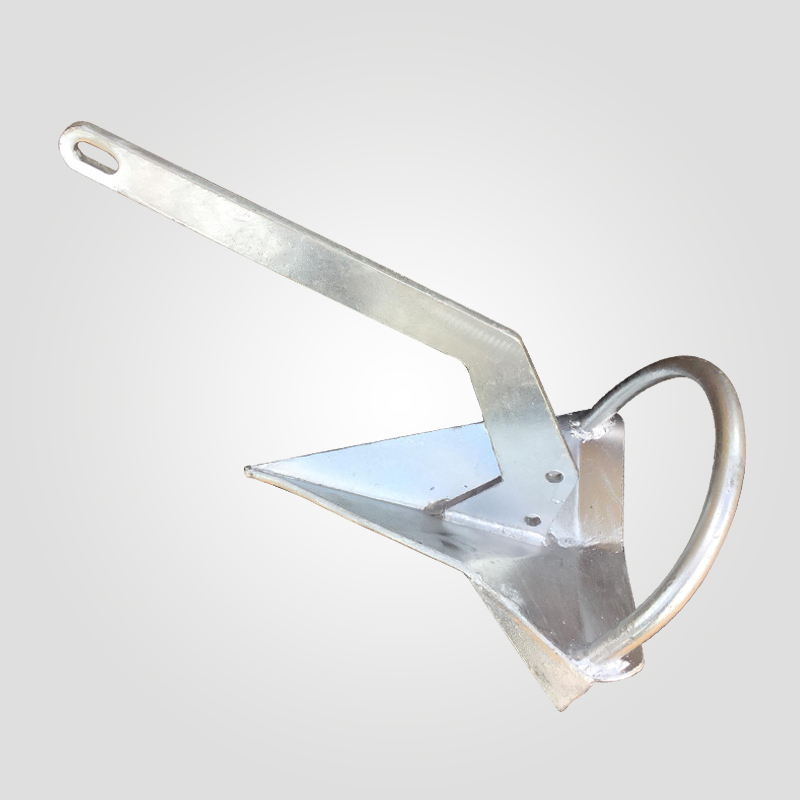
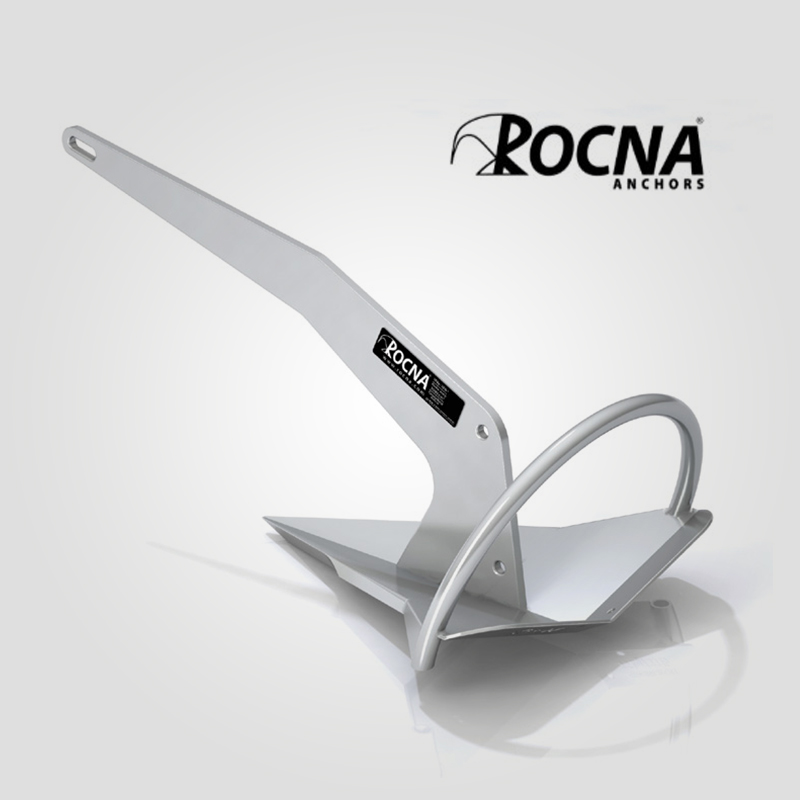
Rocna was designed by Peter Smith – an experienced sailor who has been building, racing, and cruising sailing yachts since the early 1960’s. The Rocna is an SHHP (Super High Holding Power) type anchor. During seabed testing for classification, Rocna anchors exhibited the highest holding power of any anchor that classification society RINA had ever certified.
EYE/BGD stock Rocna Anchors from 6 to 33kgs
Originally designed as the CQR anchor in the 1930’s and still in use throughout the world, this type of anchor with its versatile performance remains a favourite with many yachtsmen.
Named due to its appearance of a traditional agricultural Plough. These Anchors can be stowed over a bow roller.
The original drop-forged construction of the Plough Anchor or C.Q.R Anchor increases its strength and reliability under load. Its hinged shank delivers consistent setting and holding even under poor conditions.
EYE/BGD stock CQR/Plough Anchors from 7 to 24 kgs

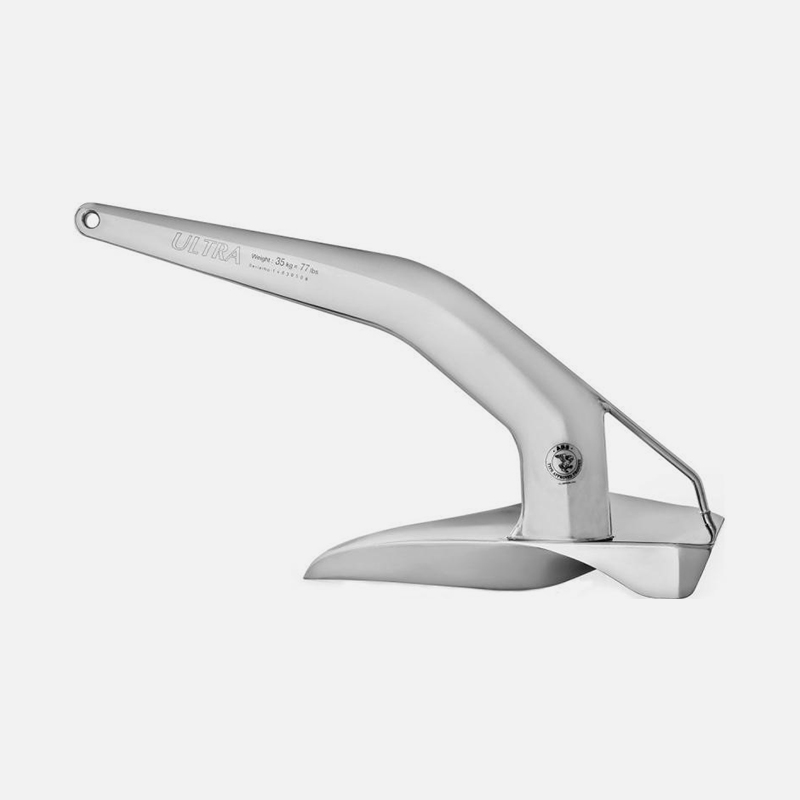
The ULTRA Anchor demonstrates why a correct weight distribution and design is so important when setting and recovering your anchor. In fact, invert any ULTRA Anchor and it will instantly recover itself to the attack position.
This performance has been achieved with the innovative patented features this anchor displays, including a curved lead filled tip for instant penetration, a hollow shank for optimal weight distribution, concaved base surfaces for maximum holding power and large side wing plates to avoid release during changing wind or tide conditions. Furthermore, each anchor is easily recoverable due to the flat pivot surface on the underside base.
Check out the website… https://www.ultramarine.com.tr/ then
Let EYE / BGD get you the best possible price!!!!!
These handy anchors can also be used as a Grapnel Anchor they are the ideal solution for dinghies, RIBS and inflatable’s. This traditional style of folding anchor is easy to fold and stow.
Made from Hot Dip Galvanised Steel they are most effective when used with a short length of chain and a longer section of rope.
All sizes available from EYE/BGD
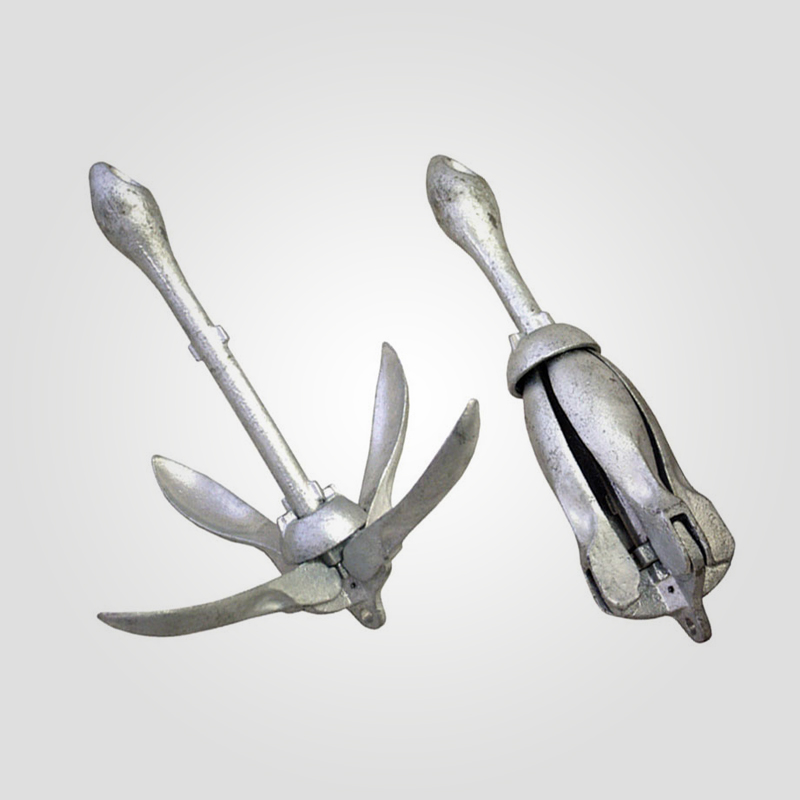
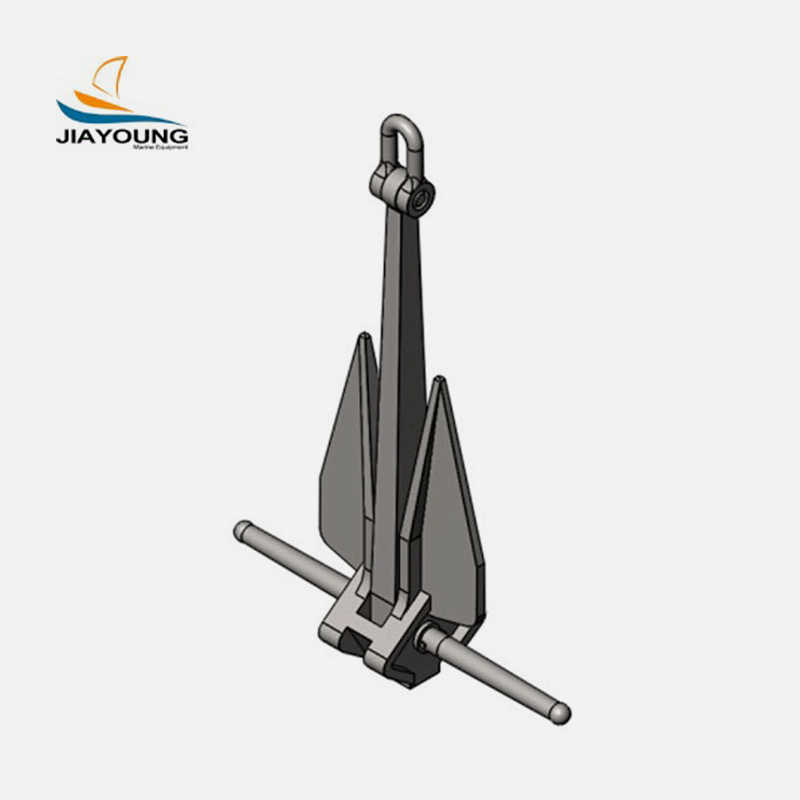
Manufactured to the original design these Danforth anchors are still popular for use on more traditional style yachts that were built in the immediate post WW2 era. First patented in 1940 their unique folding design and weight/holding power ratio made them ideal for use on seaplanes and landing craft. The design is a burying variety, and once well set will develop high resistance. Its compact flat design make it easy to retrieve and relatively easy to store.
EYE/BGD stock Original Danforth Anchors from 50 to 250 kgs (larger sizes also available)
The Hall anchor is a typical and original type of Stockless Bow Anchor. Commercial vessels of all types and sizes including the Royal Navy have used these well proven anchors for decades.
The Hall anchor was probably the among the first of the stockless anchors and though their holding- power-to-weight ratio is significantly lower than modern anchors, their ease of handling and stowage aboard large ships led to almost universal adoption.
EYE/BGD stock Hall Anchors from 50 to 200 kgs (larger sizes also available)
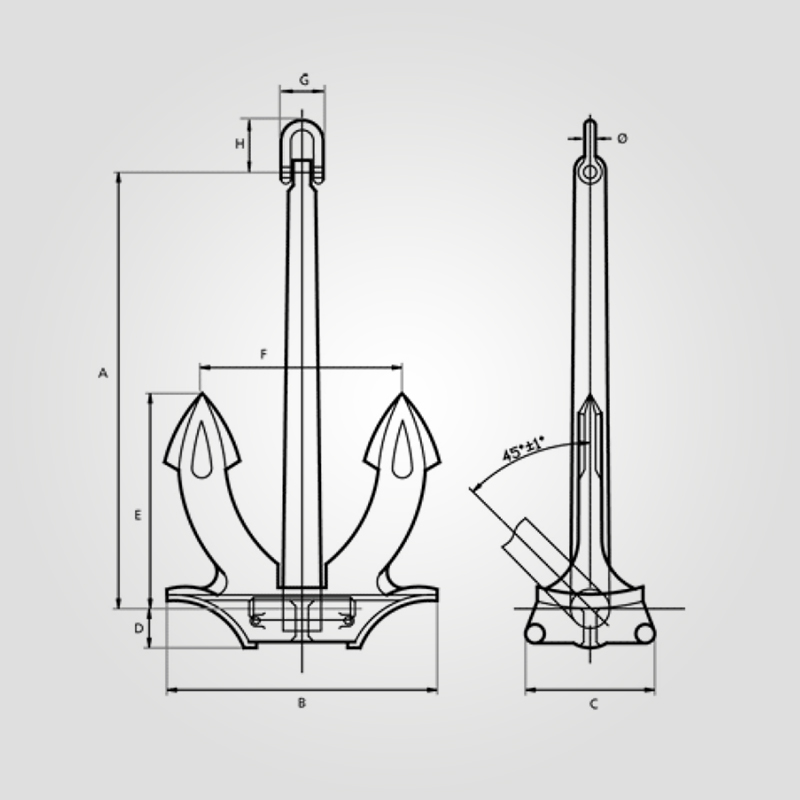
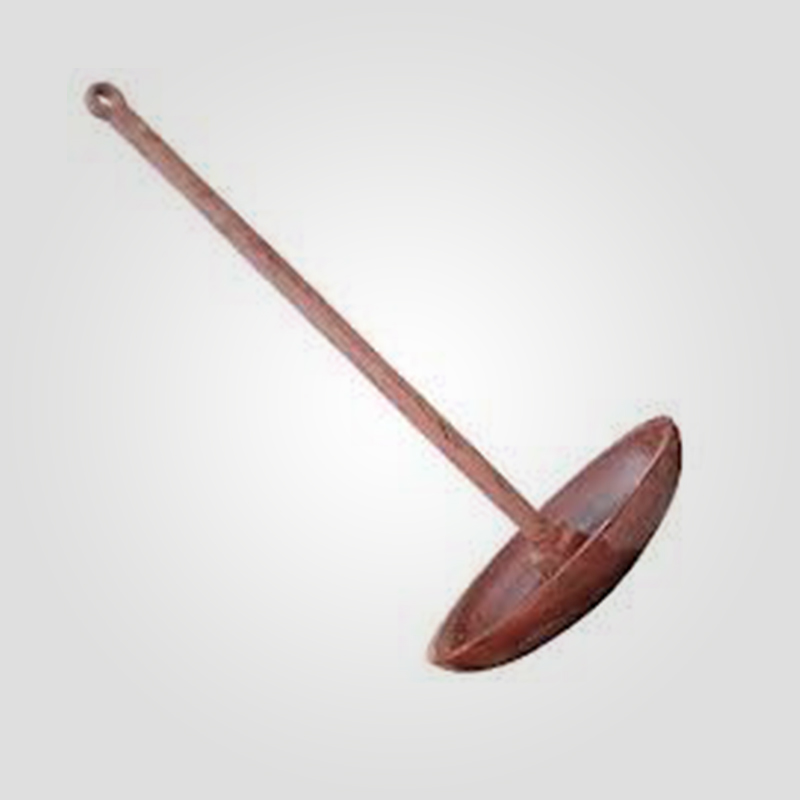
As can be seen by the picture the anchor is shaped like an upside-down mushroom and dependant on the seabed they are widely used as a permanent mooring anchor for a wide range of vessels, including lightships and barges.
It is most suitable for use where the bottom consists of soft mud, silt or sand. In these conditions it will usually eventually bury itself and subsequently achieve very high holding power. It should always be used with appropriately sized chain. Generally deployed in pairs.
EYE/BGD stock Mushroom mooring Anchors from 11 to 450 kgs
Admiralty Pattern Mooring Anchors are specifically designed for use with permanent mooring installations, they provide a high holding power option for various mooring configurations and are widely used for a number of commercial applications including fish farms, pontoon contractors and harbour authorities.
Admiralty Pattern Mooring Anchors can be supplied either flat pack or ready welded. We have recently added a version that bolts together, this is currently only available in the 50 and 150kg sizes, other sizes will be available soon.
EYE/BGD stock Admiralty Pattern Mooring Anchors from 30 to 250kgs
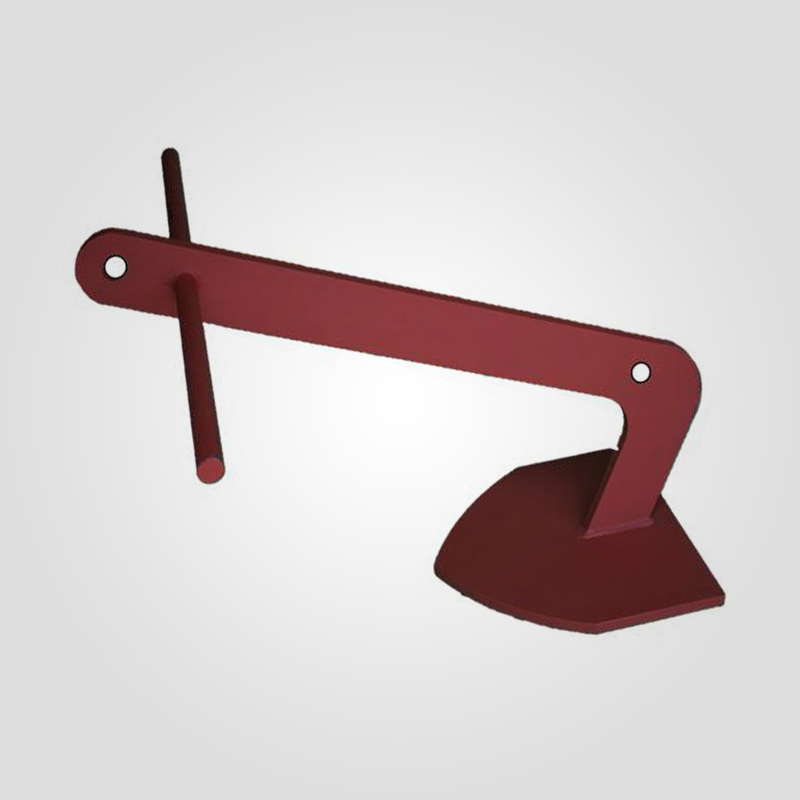
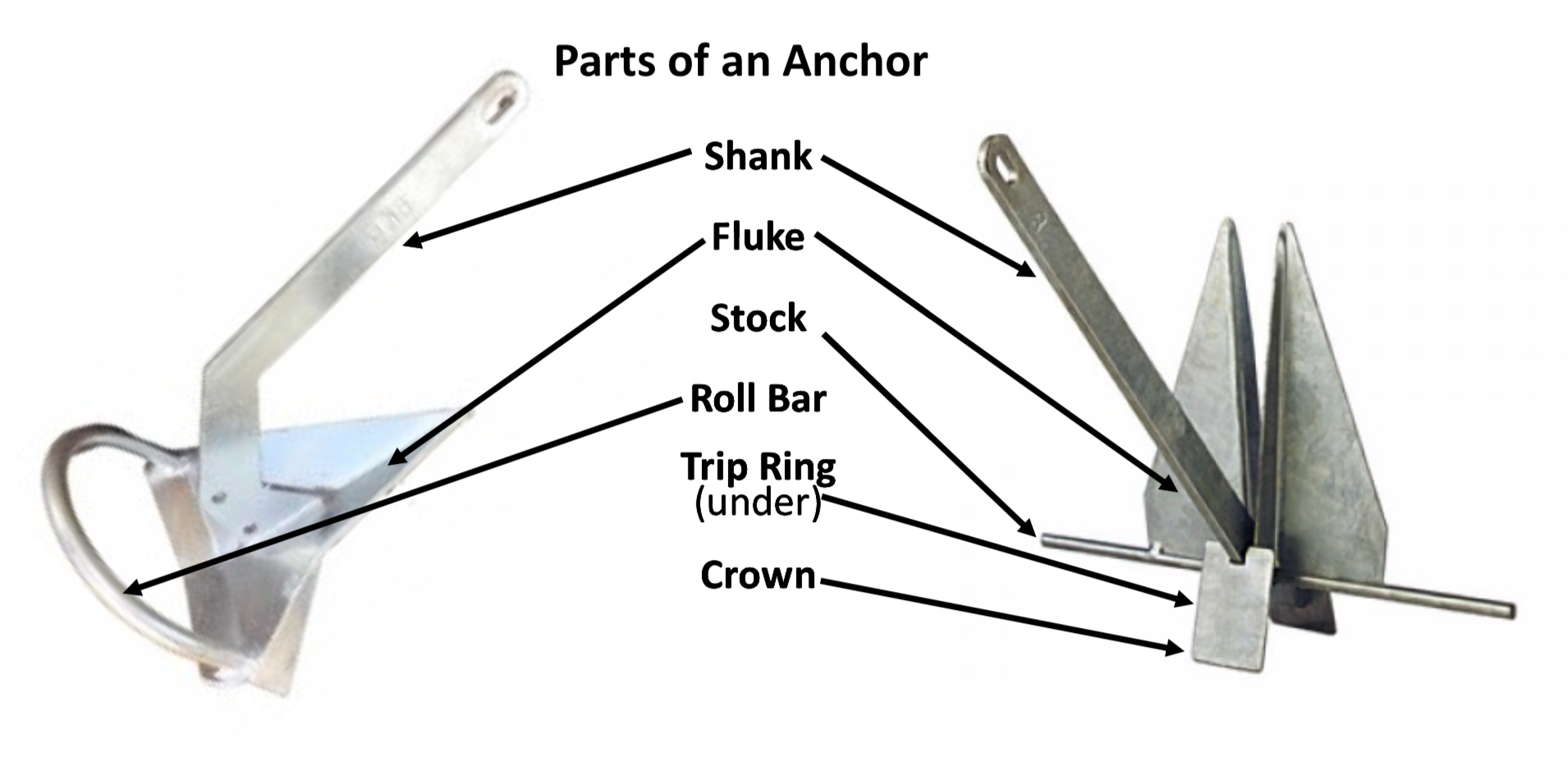
Anchoring can be simple, but to be successful a wise and competent sailor must be
aware of the following dynamics that influence how an anchor sets.
• It is necessary to know the depth of water (Depth Sounder) and the texture of the seabed (usually marked on charts) where you wish to anchor, if you intend to anchor for a long period you will also need to know the ‘Range’ (difference between high and low tide). This is so that you can lay out an adequate length of chain.
• All boat anchors are designed to lay horizontally (flat) when they are deployed.
• To ’Set’ the anchor (pull it into the seabed) it is vital to pull the anchor horizontally once the correct amount of chain has been laid, in order to do this successfully it necessary to have chain between the anchor and the boat.* Setting the anchor usually involves reversing the boat until the anchor chain tightens and the boat is held in a stationary position. *If rope only is used the anchor will be pulled semi vertically away from the seabed and will not set.
• The amount of chain that you use between the boat and the anchor is called the Scope and is the ratio of anchor line to the depth of water. For example, if the water is 5 meters deep and you pay out 15 meters of chain you have a scope of 3 to 1.
• A short scope (3:1) limits your swing in a crowded anchorage, but is harder to get a good hold on the bottom. A longer scope helps with getting an anchor to dig in as the anchor line is more likely to pull horizontally. The problem with lying to a long scope is that you need lots of space which might not be available in a crowded anchorage.
• If conditions worsen in a crowded anchorage it is important to maintain a careful anchor watch, this can be done by lining up two fixed objects to see if your position alters. Also consider seeking a more sheltered location.
• Remember that when the tide turns or conditions change, your boat (and others in the anchorage) will require the length of the scope plus the length of the boat to safely swing onto its new heading. What also must be appreciated is that dependant on hull shape, underwater profile and windage, boats behave differently whilst anchored.
• It is possible to use a mix of anchor chain and rope to create the ‘Rode’ (the term sometimes used to describe the line that attaches the anchor to the boat). Best practice is that the chain should be no shorter than the length of the boat, the rope should be spliced to the chain by a competent person, if using a windlass the rope and chain must be of a size and type that is compatible to the windlass.
The below image is 5:1 scope 30 mtrs in 6 mtrs water depth.
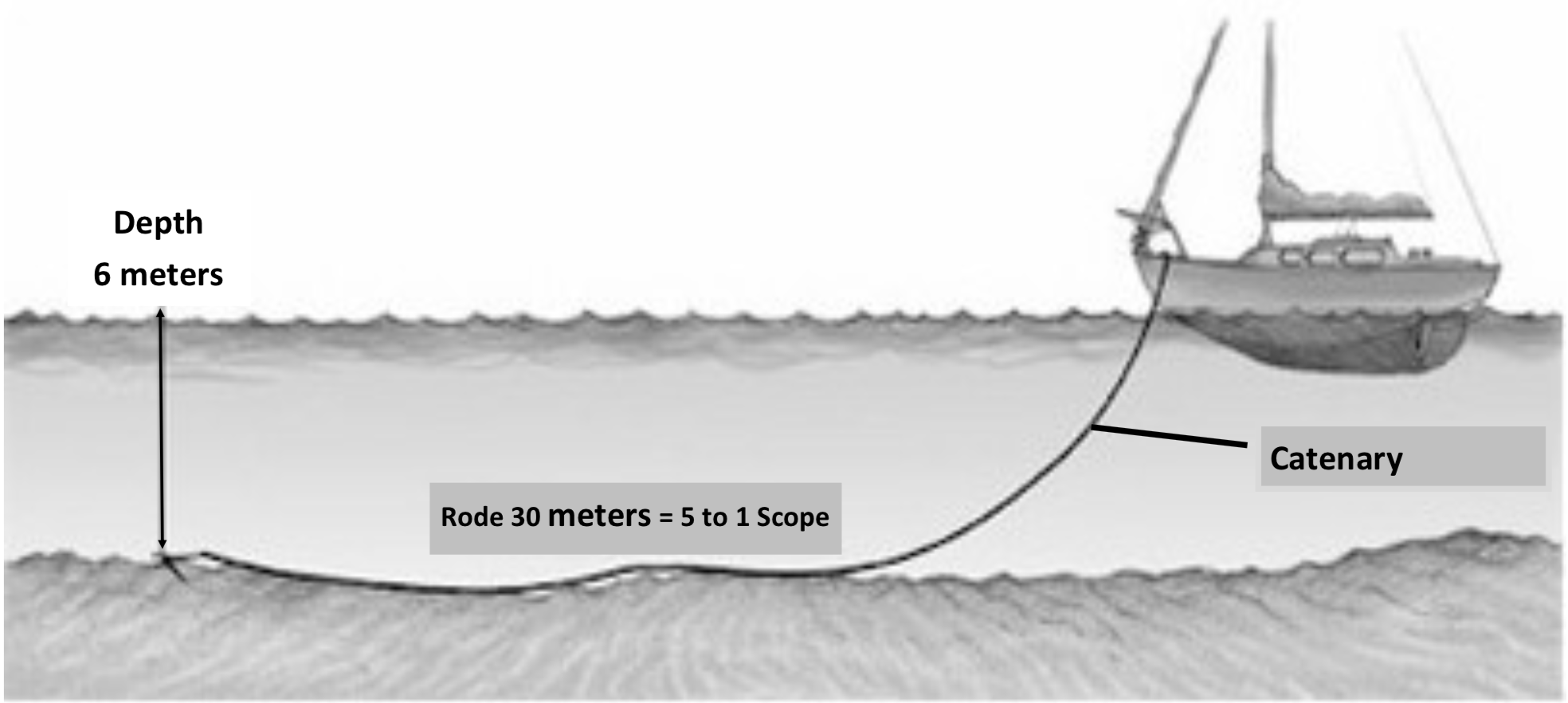
Catenary
Catenary is a word which describes the curve of the ground tackle. In the diagram above you can see the curve as opposed to the horizontal line between anchor and boat. It is this part of the rode that helps prevent snatching and jerking whilst you are anchored.
Anchoring Aids 1. Anchor Snubbing
What’s the problem?
In a stiff breeze or chop, a yacht tends to press astern lifting up the weight of chain be- tween the vessel and the anchor. Once the chain is pulled taught the links in the chocks snap tight and then grind and crunch over the bow roller, not only becoming annoying but also causing damage to the bow roller and possibly removing galvanising from the chain. The noise also makes sleeping in the forward cabin impossible. A really hard snatch could also dislodge the anchor.
What’s the answer?
Use a ‘Snubbing Line’ on the anchor chain to create some stretch within the anchor chain and eliminate the metal-to-metal action on the bow roller or any other point where the chain comes aboard.
What is a snubber?
A ‘snubbing’ line is a length of nylon warp with a chain hook set into one end for convenient connection to the anchor chain. When deployed the snubber is made off to a strong mooring point or points on the boat and the chain hook is attached to a link in the anchor chain. In a light breeze having about 3 metres of snubbing line is acceptable (lengthen according to conditions). Pay out some more chain until the snubbing line is taking all the anchoring load, then feed out a further meter of anchor chain to re- move any tension from the chain, allowing the yacht to lay back and ride upon the rope snubber attachment point.
Best practice is to have two lines attached to the chain hook and brought aboard via the bow fairleads, this not only doubles the strength of the snubber but also balances the point of effort. Rope size? – the same as you would us for Docking Lines.
Anchoring Aids 2. Anchor ‘Weight’ sometimes called an ’Angel’ or ‘Kellet’ or ’Sentinal’ or ’Chum’
What’s the problem?
The boat swings about when its anchored and sometimes the chain snatches and dislodges the anchor.
Whats the answer?
Use an anchor weight. Lowering a concentrated, heavy weight down the anchor line (rope or chain) directly in front of the bow to a point just above the seabed increases the catenary arc, it also lowers the angle of pull on the anchor. If the weight is suspended off the seabed it will act as a spring or shock absorber to dampen the sudden forces that are normally transmitted to the anchor and can cause it to dislodge and drag. In light conditions, a kellet can reduce the swing of the vessel considerably. In heavier conditions these effects disappear as the rode becomes straightened and the weight less effective.
The below image is 5:1 scope 30 mtrs in 6 mtrs water depth.
